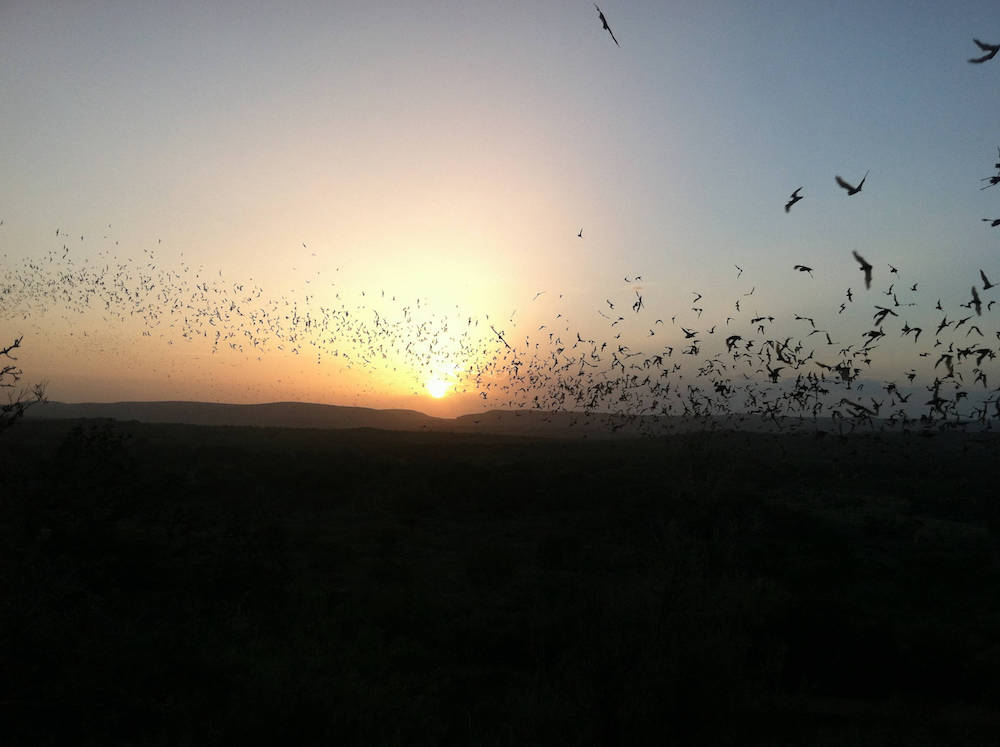
A tight cluster of Indiana bats hibernating on a cave ceiling. Photo by Ryan Hagerty, USFWS.



A tight cluster of Indiana bats hibernating on a cave ceiling. Photo by Ryan Hagerty, USFWS.

As a bat biologist, this is becoming a regular question in my life as emerging research links bats and the virus that has rapidly consumed our lives. It should be noted that we still aren’t sure if bats were the animal that transferred the virus to humans, but genetically SARS-CoV-2 (the virus that causes COVID-19 in humans) is related to coronaviruses detected in horseshoe bats in Yunnan, China. However, scientists that study viral relationships have determined that there are likely missing links (unknown viruses that occur in wildlife) between the bat virus and the human SARS-CoV-2 virus. Unfortunately, this connection has made some people who already had negative associations with bats, feel even more strongly opposed to these nighttime creatures. There are so many reasons to appreciate bats, but this situation highlights that we have a lot to learn about how many species of bats can survive these types of infections. Understanding how their immune system responds to minimize inflammation could change how we treat infectious diseases in humans.

The reason we do so much outreach with the Illinois Bat Conservation Program www.illinoisbats.org is that the news tends to sensationalize the negative information about bats and we want to provide avenues for the public to learn all the fascinating facts about bats. First, bats are an incredibly diverse taxon of mammals with at least 1,400 known species worldwide. Being mammals means that they give birth to live young and nurse their pups. Many Illinois bat species roost in dead trees under loose bark but around the world you can find bats in a wide range of habitats, including the Honduran white bat which builds its own leaf tents. Bat diets are also diverse. Illinois bat species are all insectivores, many of which help to reduce backyard pests such as mosquitos and control agricultural pest insects that damage crops. A few species that reside in the U.S. desert southwest feed on nectar and assist plants with pollination. Bats worldwide are important pollinators, especially for the agave plant used to make tequila which is predominately pollinated by bats. In Mexico and parts of South America you can find bats that fish for their food. The large flying foxes that have bigger eyes and smaller ears are fruit eaters, using keen eyesight instead of echolocation to find ripe fruit and providing the important ecosystem service of dispersing seeds.
Bats do not choose to interact with humans. As we plan for the future on how we can avoid an outbreak like this, it is important that we focus on how humans can avoid these situations. If we left wildlife alone, our risk for infectious outbreaks would be significantly reduced. We displace bats from their habitat for development around the world (and then wonder why they are in our attics). We harvest bats from the wild to be sold in markets along with many other at-risk species. It is awesome to be interested in the natural world (I have made a career out of it!), but I hope this experience reminds us of the need to respect boundaries between humans and wildlife.

So, what can you do? Most important is to learn more and spread the positive information you learn about bats. Bat Conservation International is an amazing resource for adults and children. Other suggestions include:
Tara Hohoff is the Project Coordinator for the Illinois Bat Conservation Program and an Associate Mammalogist with the Urban Biotic Assessment Program.
Submit a question for the author